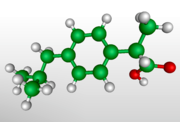newborn
There are at least 28 genetic disorders, such as sickle-cell anemia, for which newborns can be tested. Yet according to the March of Dimes, 70 percent of babies don't receive all the screenings. "The general impression is that these diseases are rare and don't affect many kids," says Nancy S. Green, M.D., an associate professor of pediatrics at the Albert Einstein College of Medicine in New York City, "but they are not so rare." For example, sickle-cell anemia may afflict only one in 5,000 children, but when you multiply that figure by the number of births per state, Green notes, the condition becomes more common than you might think.
If not detected and treated early on, genetic disorders can lead to life-threatening infection, seizures, mental retardation and more. To make sure your newborn is properly screened, talk to your pediatrician, Green advises. (Log on to marchofdimes.com for a listing and definitions of the disorders.) A sample of your baby's blood can be taken by the hospital's staff within one to two days of birth. If your baby tests positive for any disease, discuss a treatment program with your doctor.
year one
your child has a temperature: when to worry
what's normal
Temperatures between 97[degrees]F and 100.5[degrees]F are typically no cause for concern. "A baby's body temperature in the late afternoon and early evening can be on the higher end and be perfectly normal," says Robert Adler, M.D., vice chair of the pediatrics department at the Childrens Hospital Los Angeles.
what's not
An above-normal temperature of 100.6[degrees]F and higher could mean the baby's fighting an infection. This, coupled with other warning signs--she's pulling at her ear or coughing; her urine smells different or bad; she's inconsolable, unusually sleepy, hard to reuse, or having difficulty breathing--may require a trip to the doctor. Describe the symptoms to your pediatrician and get her input.
HOW TO TAKE BABY'S TEMPERATURE
Do use a thermometer designed for children. Digital models are easier to read. Place the thermometer in your child's mouth or under his arm, or use it rectally.
Don't use a mercury thermometer. If it breaks, the mercury can contaminate the baby and her surroundings.
Do wait five to ten minutes before taking your child's temperature if she has been wearing lots of layers so her body can cool and you can get an accurate reading.
Do call your pediatrician to discuss your options if the temperature reading concerns you.
FOUND
A Kid-Friendly Thermometer
If it's hard to keep your little one from squirming while you take her temperature orally, rectally or under her arm, try out this new find: the Accu-Touch thermometer ($39.99; Toys "R" Us and Target stores nationwide). It's easy to use: Just press it against your child's forehead for seven seconds and wait for the beep.
FEVER no-no's
Don't give your child aspirin; Adler says it puts her at risk for a fatal liver disease. Instead, ask your doctor if she can take a dose of liquid children's Tylenol or Motrin.
Don't rub your baby down with rubbing alcohol, which can cool him too fast. In some cases, if absorbed, rubbing alcohol can cause neurological problems and even seizures.
COPYRIGHT 2005 Essence Communications, Inc.
COPYRIGHT 2005 Gale Group



